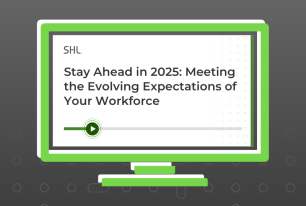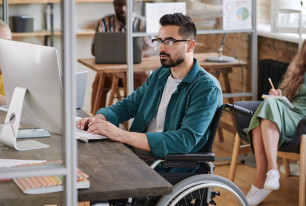Rethinking Racism: How to Work on Our Unconscious Bias for a Promising Future
Equity will only exist when everyone acknowledges and works on the implicit racism that exists in our own communities.
Share
At a time when everyone is pulling together to survive a global pandemic, divisions within society have rocketed onto our screens. Despite being nearly 4000 miles away the murder of George Floyd in Minnesota has had an astounding effect on us here in the UK. This tragedy signifies injustice of the bleakest kind.
It provides a stark reminder that, perhaps, we are not as far along as we thought in the journey towards equality. A flame has been reignited in many of us as we are jolted back to situations where we ourselves were treated as though we are inferior due to a characteristic that we hold. We might not be facing the same struggles that the black communities face in the US or indeed here in the UK, but we want to do something, we want to help in some way. Awareness has been raised but once the headlines are gone and the world changes its focus to something else – how can we keep the flame burning?
Explicit or overt racism is not common in society these days and we may even have thought that racism is less prevalent however it is still there behind closed doors and more implicit and unconscious in nature (Payne & Vuletich, 2018). So how can we make a difference when so much of this is subtle, unseen and could easily go undetected even by perpetrators?
Psychology can provide some insight into this matter; specifically, cognitive psychology.
Cognitive psychology focuses on the mind as an information processor including perception, memory, thinking, and consciousness. As humans we have been hardwired from childhood; years of stereotyping, standards set by society, the media, our friends, and family amongst other factors.
For everyday functioning it is human nature to rely on rules of thumb – heuristics – to make quick decisions and after we encounter similar situations several times we go on autopilot.
This process of associated learning involves pairing a neutral stimulus with a positive or negative quality (e.g. linking person of black origin with danger) and is what sits behind implicit racism.
Awareness has been raised but once the headlines are gone and the world changes its focus to something else – how can we keep the flame burning?
Tversky & Kahneman (1983) state that these shortcut strategies we use lead to systematic and predictable errors. Our brains categorize things including people and, thus, lead us to judge without any conscious effort. It is therefore easy for us to judge people based on their physical characteristics and, like it or not, we all do this. Understanding and recognizing this is the first step towards change. But how do we change the way we think?
Changing our thought process is a challenge, but a challenge that each and every one of us can rise to. After all, many of us have just learned how to work at home, use technology we weren’t familiar with, and survive without seeing family and friends we care about. Now is the time to start this process.
Some practical things we can all do to help re-train our minds are:
Educate Ourselves
Learning is a well-documented recommendation of the Black Lives Matter movement. Educating ourselves is the basis for creating an understanding of the struggles that Black and Indigenous People of Color (BIPOC) have faced over the years, looking at factual records, and providing ourselves with the context necessary to fully appreciate and empathize with the current situation.
Be Prepared to Cause Discomfort
Have conversations about racism with colleagues, friends, and family. This is often seen as a taboo subject. People may find it uncomfortable to talk about. To make a change and have an impact, these types of conversations need to become normal so that we can unearth our unconscious views and alter them.
Call Out Casual Racism
This often goes unchecked. We think it might be easier to stay quiet however this will only contribute to the prevalence of racism. Raise your voice that a statement or assumption is uncomfortable, inappropriate or hurtful. Be open to the reaction but at least you create an opportunity for change.
Creating an Emotional Experience
Reconditioning or reconsolidation takes place when a new positive feeling replaces the old feelings of fear. Something as simple as getting to know a colleague from a different ethnic background can make a difference. Research shows that individuals who have friends from other cultural backgrounds are more likely to be exposed to positive associations with that group and this can reduce implicit biases (Aberson et al, 2004).
Let’s not rest on our laurels, let’s not take the easy way out – let’s be the conductors of our own thoughts and actions to continue with the journey to equality. It’s about time we take responsibility for the world in which we live.









